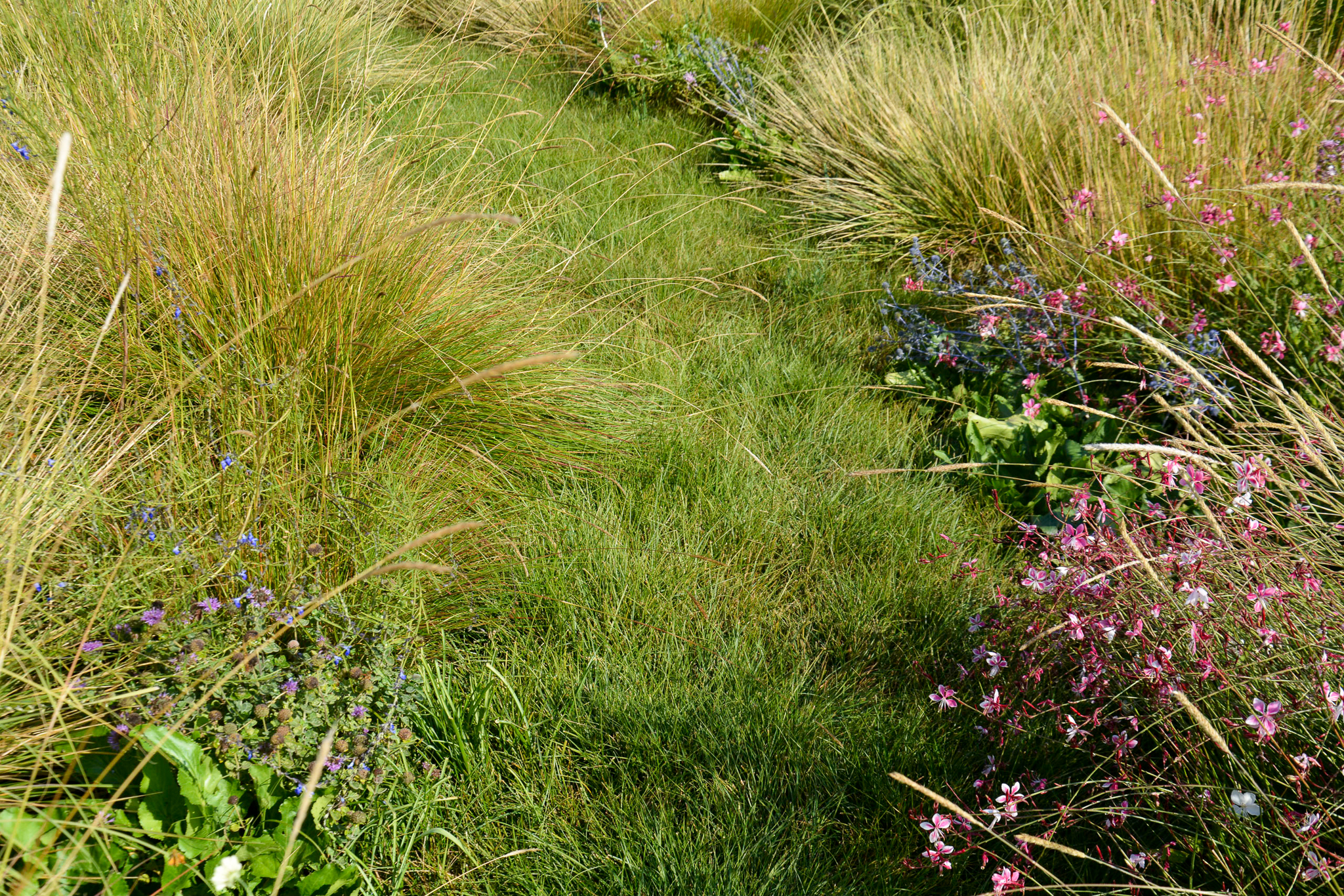
Carex pansa
California Meadow Sedge
Description
Carex pansa is a fine-textured, creeping, evergreen colony-forming sedge that's always well behaved. It has lustrous dark green foliage that grows 6-12 inches high. Slender flowers emerge in the spring just above the foliage, at first creamy white but maturing to golden tan. The flowers are noticeable but not showy. It tolerates a wide variety of soils from sand to clay and even grows in dune sand in first-exposure coastal conditions. Carex pansa is best in full sun to part shade. With a hard freeze, the green foliage can blush coppery brown. It is native to coastal California from the Channel Islands north to British Columbia.
Carex pansa remains one of our favorite groundcover grasses for making natural lawns and meadows. We use Carex pansa on the edge of meadows, around walks, and around pop-up sprinkler heads to allow sprinklers to spray over this grass to other taller meadow grasses. It tolerates seasonal wetness and can be used in bioswales and rain gardens while also being fully drought-tolerant once established.
Not spreading aggressively, Carex pansa won't sneak into borders and adjacent plants. It combines well with almost any other grass, particularly other sedges, Festuca mairei, Pennisetum spathiolatum, and the Muhlies.
John's Notes
General Details
Plant Type
Sedge, Cyperaceae
Native Region
Coastal California, USA
Seasonality
Cool-season, evergreen
Height
6-8 inches
Width
6+ inches
Alternate Names
Carex arenicola, Sand Dune Sedge
Aesthetic Form
Landscaping Value
Natural lawns, groundcover, bioswales
Foliage
Fine-textured foliage with copper winter highlights
Flower Form
Noticeable white flowers mature to brown seeds heads
Bloom Cycle
Spring to summer
Growth Habits
Establishes quickly, colony forming, spreads from rhizomes
Plant Pairings
Most other grasses, particularly other sedges, Festuca mairei, Pennisetum spathiolatum, and Muhlenbergias
Care & Maintenance
Watering Needs
Drought-tolerant, best with moderate water
Soil Preferences
Wide adaptability from dune sand to heavy clay
Sun Exposure
Full sun to partial shade
Winter Heartiness
10° F, USDA zones 7-10
Desert Adaptability
No Available Information
Costal Adaptability
No Available Information